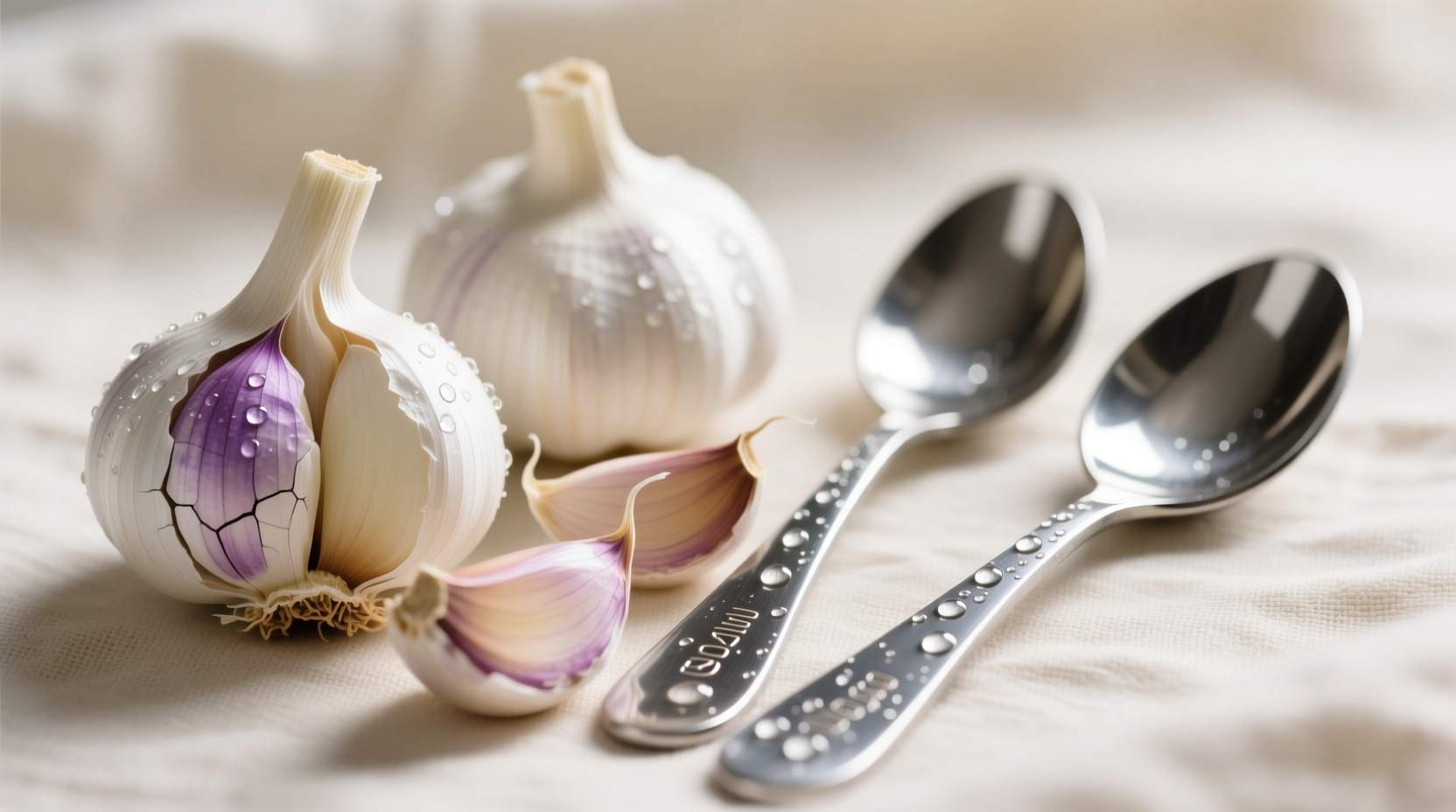When you're in the middle of cooking and need to convert fresh garlic to tablespoons, getting the measurement right makes all the difference in flavor balance. Whether you're following a family recipe or experimenting with new flavors, understanding garlic conversions prevents your dish from becoming overpowering or bland.
Why Garlic Measurement Matters in Cooking
Garlic's potent flavor can transform a dish from ordinary to extraordinary, but only when used in the right proportions. Professional chefs know that inconsistent garlic measurements are one of the most common reasons home cooks struggle with recipe replication. The difference between 1 and 2 tablespoons of minced garlic can mean the difference between a subtle aromatic background note and an overwhelming pungent flavor that dominates your entire dish.
Garlic Clove Size Variations and Their Impact
Not all garlic cloves are created equal. The size of garlic cloves varies significantly depending on variety, growing conditions, and harvest time. Understanding these differences is crucial for accurate measurement:
| Garlic Size | Minced Measurement | Equivalent in Tablespoons |
|---|---|---|
| Small clove (½" diameter) | ½ teaspoon | 1/6 tbsp |
| Medium clove (¾" diameter) | 1 teaspoon | 1/3 tbsp |
| Large clove (1" diameter) | 1½ teaspoons | ½ tbsp |
| Extra-large clove (1¼" diameter) | 2 teaspoons | 2/3 tbsp |
This measurement data aligns with USDA food composition guidelines and professional culinary standards used in recipe development. When a recipe calls for "2 garlic cloves," it typically assumes medium-sized cloves unless otherwise specified.
Practical Measurement Techniques for Home Cooks
While kitchen scales provide the most precise measurements, most home cooks rely on volume measurements. Here's how to get accurate results without specialized equipment:
- For minced garlic: After mincing your garlic, gently press it into your measuring spoon to eliminate air pockets
- For chopped garlic: Chopped pieces create more air space, so you'll need approximately 25% more volume than minced
- For roasted garlic: Roasted cloves yield less volume but more intense flavor—use 3 roasted cloves for every 2 raw cloves called for
- When in doubt: Start with less garlic—you can always add more, but you can't remove it once incorporated

When Precision Matters Most
Certain dishes require precise garlic measurements while others allow for more flexibility. Understanding these context boundaries helps you prioritize accuracy where it counts:
- High-precision applications: Salad dressings, vinaigrettes, and delicate sauces where garlic flavor isn't cooked off
- Medium-precision applications: Pasta sauces, soups, and stews where garlic mellow as it cooks
- Flexible applications: Roasted vegetable dishes, braises, and slow-cooked meals where garlic flavor integrates over time
Garlic Substitution Guide for Emergency Situations
Ran out of fresh garlic? These substitutions can save your recipe while maintaining flavor integrity:
- Pre-minced garlic in jars: Use 1.5x the amount of fresh (jarred garlic is less potent due to preservatives)
- Garlic powder: ⅛ teaspoon powder = 1 fresh clove (use sparingly—it's concentrated)
- Garlic paste: ½ teaspoon paste = 1 medium clove
- Garlic salt: ¼ teaspoon = 1 clove (reduce additional salt by ⅛ teaspoon)
According to the Culinary Institute of America's flavor balancing principles, these substitutions work best when adjusted based on the dish's cooking method and other ingredients present.
Professional Chef's Tips for Maximizing Garlic Flavor
As someone who's worked in both professional kitchens and taught home cooking classes, I've found these techniques consistently improve garlic integration:
- Timing matters: Add garlic toward the end of sautéing onions to prevent burning
- Cut consistency: Finer mince releases more flavor compounds but burns faster
- Temperature control: Cook garlic over medium-low heat—high heat creates bitter compounds
- Acid balance: A splash of lemon juice or vinegar after cooking mellow garlic's sharpness
Common Measurement Mistakes to Avoid
After teaching thousands of home cooks, these are the most frequent garlic measurement errors I've observed:
- Not accounting for size variation between cloves in the same head
- Packing minced garlic too tightly into measuring spoons
- Using garlic powder measurements for fresh garlic without conversion
- Adding all garlic at the beginning of cooking, causing bitterness
Remember that garlic's flavor compounds continue to develop even after cooking stops, so what tastes perfect when hot may become overpowering as it cools—especially in dishes served at room temperature.











 浙公网安备
33010002000092号
浙公网安备
33010002000092号 浙B2-20120091-4
浙B2-20120091-4